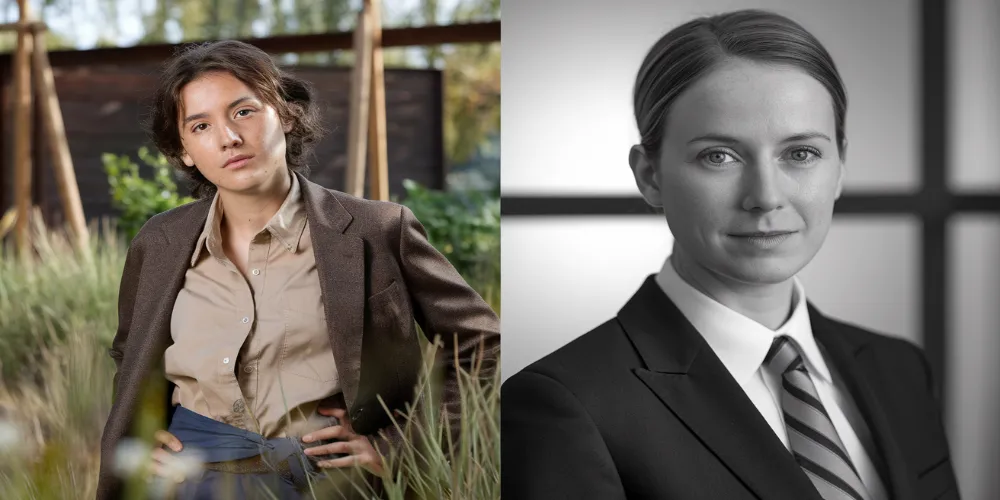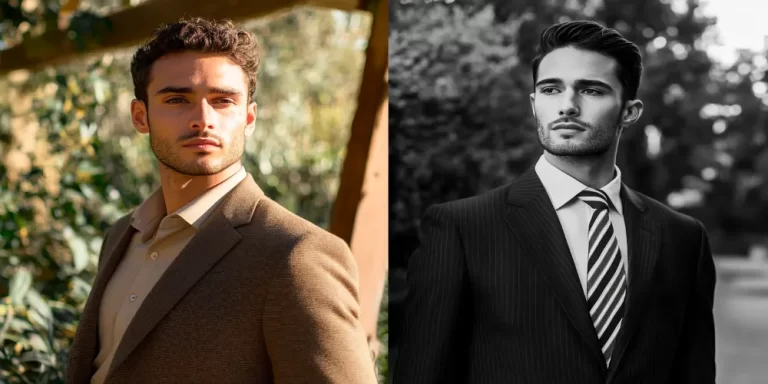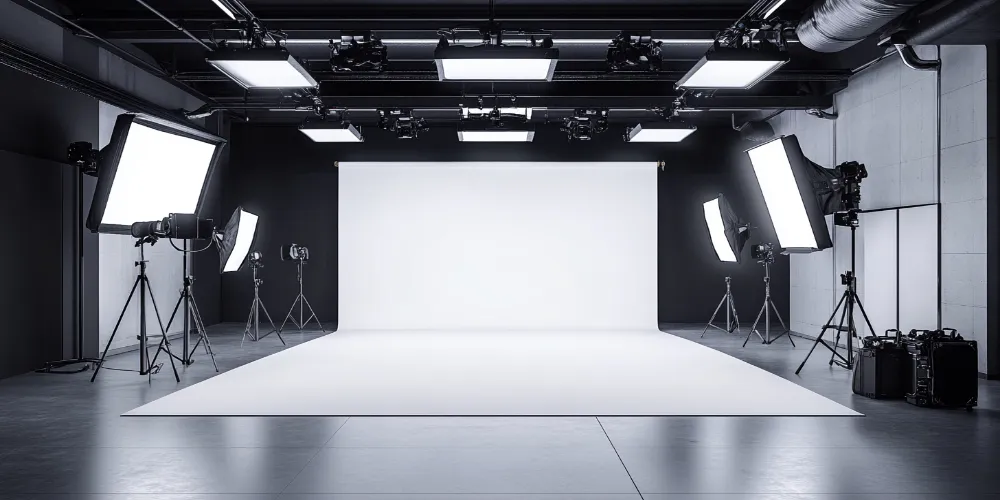How to Choose Between a Portrait and a Headshot?
First impressions often come from images, not words. Whether for a LinkedIn profile, personal website, or magazine cover, the photo you choose leaves a lasting impact. Headshots and portraits are the two most popular options, but they serve different purposes. Headshots focus on professionalism, making them perfect for business profiles or resumes, while portraits offer more creativity, telling a deeper story and showcasing personality. Knowing the difference helps you choose the right style to effectively represent yourself and your brand.

What is a Headshot?

| Aspect | Description |
| Framing | Focuses on the head and shoulders, often tightly cropped around the face. |
| Lighting | Even and neutral lighting to avoid harsh shadows. Usually taken in a studio or controlled setting. |
| Expression | Generally neutral or friendly, aiming to project confidence and approachability. |
| Purpose | Used for professional representation such as LinkedIn profiles, business cards, and actor resumes. |
| Background | Clean and simple to avoid distractions, typically a solid color or softly blurred background. |
Uses of a Headshot
Headshots are most commonly used in professional settings. Here are a few examples:- Business and Corporate Profiles: Headshots are essential for executives and employees looking to create a professional image on LinkedIn or company websites.
- Actors and Models: Headshots are a staple in the acting and modeling industries, serving as a basic introduction for casting directors and agents.
- Creative Professionals: Freelancers and entrepreneurs often use headshots to humanize their personal brands on websites and social media.
What is a Portrait?
| Aspect | Description |
| Framing | Can range from close-ups to full-body shots, offering more versatility. |
| Lighting | Can be dramatic or artistic, with more flexibility in the use of shadows and highlights. |
| Expression | May show a wider range of emotions, from serious and contemplative to joyful or candid. |
| Purpose | Used to tell a story or evoke emotion, often featured in personal branding, editorials, and art. |
| Background | Can include elements that add to the narrative, such as environmental settings or props. |
Uses of a Portrait
Portraits are more versatile and can be used in a wide variety of contexts:- Editorial Features: Portraits are commonly used in magazines, blogs, and art exhibitions to tell a more nuanced story about the subject.
- Personal Branding: Entrepreneurs, creatives, and influencers often use portraits to showcase their personalities and brand stories.
- Artistic Expression: Portraits are a favored medium for photographers and artists looking to explore emotional depth, style, or cultural themes.
Key Differences Between Headshots and Portraits

| Aspect | Headshot | Portrait |
| Purpose | – Focuses on professional identification and branding. – Common for LinkedIn, business websites, and portfolios. | – Tells a story, conveys emotions, or showcases personality. – Used for personal branding, editorial, or artistic projects. |
| Framing & Composition | – Tightly cropped to emphasize the head and shoulders. – Minimizes distractions for a clean, professional look. | – Can range from close-up to full-body. – Composition often includes environment and body language, contributing to the narrative. |
| Expression & Emotion | – Neutral or friendly to project professionalism, trust, and approachability. – Often follows industry-specific requirements (e.g., lawyers vs. creatives). | – Flexible expressions ranging from serious to playful. – Focuses on capturing deeper emotions, offering more dynamic and personalized depictions. |
| Lighting | – Soft, even lighting to minimize shadows and highlight facial features. – Designed for clarity and professionalism, typically in a controlled studio setup. | – More creative, using natural light or dramatic effects (e.g., Rembrandt lighting). – Lighting choices enhance mood, narrative, or artistic vision. |
| Background | – Simple, neutral backgrounds (solid colors or softly blurred). – Keeps focus strictly on the subject’s face. | – Varied and contextual backgrounds (nature, architecture, artistic setups). – The background contributes to the story and depth of the portrait. |
| Posing & Attire | – Straightforward, minimal posing to emphasize facial features and approachability. – Often formal attire aligned with professional contexts. | – Dynamic and varied poses, allowing for more expressive body language. – Attire can range from casual to creative, often reflecting personality or theme. |
| Number of Subjects | – Primarily focuses on a single subject. – Designed for individual branding and identification. | – Can include multiple subjects (e.g., family, group portraits). – Flexibility to tell a broader story or capture relationships. |
| Mood & Storytelling | – Friendly, relaxed mood that communicates trust and professionalism. – Some industries may favor a more serious or concentrated tone (e.g., business vs. entertainment). | – No limitations on mood. Can be intimate, dramatic, joyful, or even dark, depending on the artistic direction. – Strong storytelling element, reflecting personality or context. |
| Level of Creativity | – Minimal experimentation to ensure consistency across professional use. – Follows standard industry requirements for uniformity (e.g., for resumes or corporate branding). | – High creative freedom, allowing for personalized and artistic approaches. – Can incorporate unique elements like props, experimental poses, or diverse lighting. |
Both headshots and portraits play an essential role in personal and professional branding, and knowing when to choose each can significantly impact the message you want to convey.
When to Choose a Headshot
- Professional Profiles: Whether you’re on LinkedIn, your company’s website, or a business card, a headshot is the ideal way to represent yourself in a polished, professional manner.
- Job Applications: If you’re applying for a job or attending a networking event, a professional headshot can make you stand out from the crowd.
- Actor or Model Portfolios: For those in creative industries like acting or modeling, headshots are essential for casting calls and portfolios. Learn Why You Shouldn’t Wear Busy Patterns in a Headshot
When to Choose a Portrait
- Personal Branding: If you want to show more of your personality or tell a deeper story, a portrait is the way to go. This is particularly useful for entrepreneurs, artists, and public figures.
- Editorial or Creative Work: Portraits offer more room for artistic expression and are commonly used in magazines, blogs, and promotional materials.
- Family or Group Photos: Unlike headshots, which are focused on the individual, portraits can include multiple subjects, making them perfect for family photos or business teams.
The Role of Lighting in Headshots vs. Portraits

Lighting plays a crucial role in both headshots and portraits, but it is used differently depending on the type of image being captured.
- In headshots, the goal is usually to create a flattering, neutral image of the subject. Photographers often use large, soft light sources to minimize shadows and ensure that the subject’s face is evenly lit. This helps to create a clean, professional look that highlights the subject’s features without distractions.
- In portraits, lighting is often more dramatic and creative. Photographers may use a variety of light sources, angles, and modifiers to create shadows and highlights that add depth and emotion to the image. The lighting in a portrait can change the entire mood of the photo, making it an essential element in telling the subject’s story.
Choosing the Right Photographer
When deciding whether to go for a headshot or a portrait, it’s essential to find a photographer who specializes in the style you need. A professional headshot photographer will understand how to light and compose the shot to highlight your professionalism. A portrait photographer, on the other hand, will be more adept at capturing your personality and telling a story through their images.
Questions to Ask Your Photographer:
- For Headshots: What type of lighting do you use? Do you offer retouching services? Can you help with posing?
- For Portraits: Can we shoot on location? How can we incorporate elements of my brand or personality into the portrait? Can you help me with styling or props?
Which Should You Choose?
Both headshots and portraits have their place in personal and professional branding. A headshot is ideal for when you need a clean, professional image that introduces you to potential employers, clients, or casting directors. A portrait, on the other hand, allows for more creativity and is better suited for personal branding, editorial features, or artistic endeavors.
Ultimately, the choice comes down to your needs and the message you want to convey. If you’re unsure, it might be worth investing in both—a professional headshot for business purposes and a creative portrait to showcase your personality.
Ready to take your brand to the next level with the perfect image? DNB Productions offers tailored headshot and portrait photography services that capture your essence and elevate your professional and personal brand. Contact us today to schedule your session and put your best face forward!
DNB Productions
Douglas N. Burns
we specialize in bringing your business to life through exceptional commercial and business photography.
